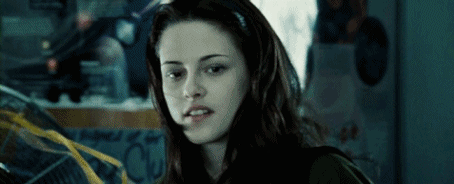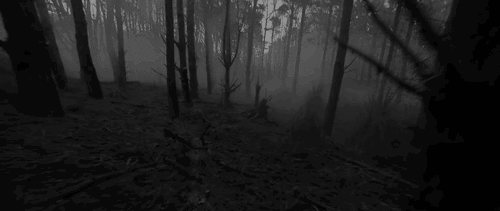At the moment, I’m starting to look into concepts around how readers (and gamers/viewers) connect with characters, or how identification happens.
There’s a few different thoughts around identification: does the reader want to BE that character? Do they imagine themselves AS the character? Or does the reader hold themselves outside of the character, observing and judging the situations and events?
It’s not as simple as “readers connect with the main character” (and definitely not that the main character has to be likable to be identifiable!). In some books, the main protagonist is the alienated viewpoint. Say, feed by M T Anderson – the main character, Titus, is this solipsistic teen in a highly commercial and capitalistic future. In this future, kids have an internet implant (the feed) in their brain (imagine having thoughts getting interrupted by ads). Except for Violet, who sees the world “as it truly is” without the implant and questions everything. Even though the book is written entirely through Titus’ perspective, empathy and identification goes more to Violet. The book is even dedicated “To all those who resist the feed.”
In film studies, identification is also complicated, with commentators distinguishing between primary identification (with the camera) and secondary identification (the character of empathic choice) (Clover 7-8).
Evil Dead awesomeness. Dem camera moves!
… just as attacker and attacked are expressions of the same self in nightmares, so they are expressions of the same viewer in horror film. We are both Red Riding Hood and the Wolf; the force of the experience, in horror, comes from “knowing” both sides of the story. ~ Carol Clover
I’m still fairly new to looking into video game studies, but in searching for stuff around this topic, I found an interesting study on identification in three ways: avatar identification (roleplay, customisation and escapism), group identification (socialising and relationships) and game identification (advancement and mechanics).
 Character customisation is huge for me and how I play Warcraft.
Character customisation is huge for me and how I play Warcraft.
Identification is more than just “I like X”, but is important also in part because of the general perception that watching/reading/playing can influence you, the typical example being that playing violent video games makes you commit real world violence – which I totally reject. 
Identification is also interesting in terms of genre. For example, with romance, it’s probably safe to say most people assume that the reader identifies with the heroine. And for a while the heroine as narrator was pretty established, however from perhaps around the 80’s this began to change as reader’s wanted to see the narrative from the heroes point of view. Author Laura Kinsale proposed in “The Androgynous Reader” that actually, the romance reader identifies with the hero, as the reader is represented by and also in competition with the heroine. Kinsale argued that “through her own and the hero’s eyes, the reader watches and judges the heroine” (35).
Which leads me onto what I’ve been looking at as a case study for all this: Twilight! On Meyer’s website, she states that “I left out a detailed description of Bella in the book so that the reader could more easily step into her shoes.” This goes back to the Mills and Boon adoption of “Lubbock’s Law”:
On Meyer’s website, she states that “I left out a detailed description of Bella in the book so that the reader could more easily step into her shoes.” This goes back to the Mills and Boon adoption of “Lubbock’s Law”:
Lubbock’s Law was derived from Percy Lubbock, critic and author, who published The Craft of Fiction in 1921. Lubbock maintained that the best fiction, such as Gustave Flaubert’s Madame Bovary, succeeded in part because the author wrote from the heroine’s point of view. ‘to have lived with their creations is to have lived with them as well,’ Lubbock maintained. Fiction, he added, must ‘look true’.~ Joseph McAleer
How Meyer interprets how reader’s identify with Bella was also extended to the choice of casting:
For every actress that has been suggested as Bella in the past few years, there are always a slew of critics that cry, “But she doesn’t look like Bella!” (Which can often be translated thusly: “She doesn’t look like ME!”) To this I would like to say: “Of course she doesn’t!” Bella is a fictional character, and she looks different to everyone. As is the same with every actor who will be cast in the next few months, no one is going to match up with your mental picture exactly—or mine.
Bella’s apparent blandness or blankness of personality was also picked up on by critics as a device for identification:
Unfortunately, the books are tough to defend. There’s no doubt, for instance, that Bella is a remarkably droopy, drippy character, and while her blankness could be justified as a device, enabling readers to identify with her (which has obviously happened to an extraordinary degree), she also has a weird clumsiness, a haplessness that means her vampire boyfriend has to rescue her regularly. ~ Kira Cochrane, The Guardian
Concerns about Bella’s passivity neglect to consider how the books invite identification with the main character. For this to be possible, there have to be certain gaps in her characterisation, but these gaps are designed to be filled in by readers with their own characteristics. ~ Catherine Strong, The Age
As Crawford examines in his chapter on the fandom and the controversy of Twilight, it is often claimed to be bad for readers, because if they identify with Bella (through such claims in fan reviews as wanting to be Bella or wanting to marry Edward etc) then they have a role model who has low self-esteem, is submissive, is passive and all that jazz – but then he asks “does the fact that someone identifies with a fictional character really imply that they view them as ‘a model for [their own] real-life choices’?” The argument against Bella and Twilight is also used for 50 Shades, such as with this article snarkily titled “Christian Grey is not real”. Crawford sees this argument as rather reductive, and also perhaps with implicit discrimination against readers (of Twilight) “because of their presumed youth and femaleness … often seem to be assumed, a priori, to lack the critical faculties necessary to distinguish between fantasy and reality.” This will be no surprise to fans of romance, or even young adult literature.
So TL;DR, there’s a bunch of theories of how identification works, but it’s important to think about because society thinks that identification with fictional characters will lead to bad things, particularly if the work is about about sex or violence or is aimed towards younger readers.
Recommended Reading
- Men, Women and Chainsaws by Carol Clover ~ A study of horror films from the 70’s to mid 80’s and how identification works (using a psychoanalytical framework) and how it is gendered.
- Passion’s Fortune: The Story of Mills & Boon by Joseph McAleer ~ A very detailed history of how Mills & Boon became one of the biggest publishing names in the world
- The Romance Revolution: Erotic Novels for Women and the Quest for a New Sexual Identity by Carol Thurston ~ A slightly older work, on how romance and women in romance were changing in the 70’s and 80’s due to the new wave of feminism.
- “The Androgynous Reader.” by Laura Kinsale in Dangerous Men and Adventurous Women: Romance Writers on the Appeal of the Romance. Ed. Jayne Ann Krentz. ~ How reader identification works with romances (this is not an academic work, but rather from the perspective of an author of romances – however, quite a few academics pick up on this and extend the work, such as Amber Botts “Cavewoman Impulses: The Jungian Shadow Archetype in Popular Romance Fiction” in Romantic Conventions edited by Anne K Kaler and Rosemary Johnson-Kurek.)
- The Twilight of the Gothic? Vampire Fiction and the Rise of the Paranormal Romance by Joseph Crawford ~ awesome history of the paranormal romance, its gothic associations, and including a reader response chapter on “The Twilight Controversy”
- Player Identification in Online Games: Validation of a Scale for Measuring Identification in MMOG’s by Jan Van Looy, Cedric Courtois, Melanie De Vocht and Lieven De Marez in Media Psychology Vol 15.2 (2012).


